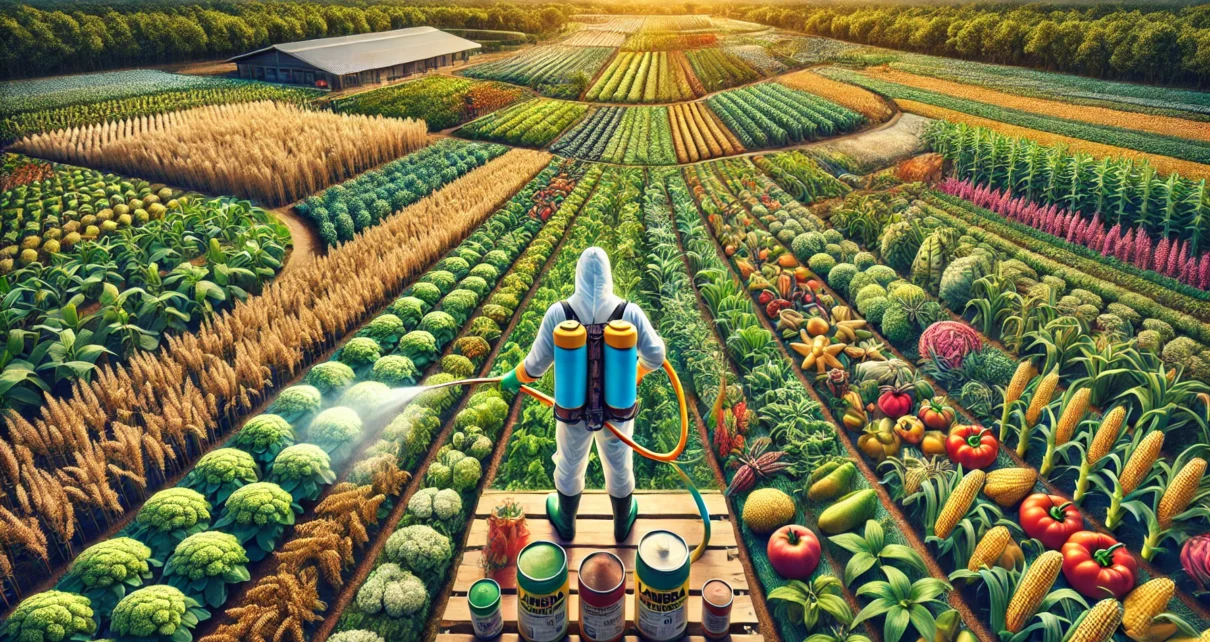Vegetable gardening has grown from a small hobby into a vital practice for both urban and rural households. Whether you’re cultivating a backyard plot or managing a commercial farm, one of the most important factors for successful vegetable production is proper fertilization. Vegetables are nutrient-hungry plants, and the fertilizer you choose can directly influence not only yield but also taste, color, and disease resistance. With a wide variety of fertilizers available on the market, selecting the best one for your vegetables can feel overwhelming.
The answer depends on several factors: soil health, crop type, growth stage, and local climate. This article explores the different types of fertilizers, how they work, and which options bring out the best in your vegetable garden or farm.
The Nutritional Needs of Vegetables
Vegetables need a balanced mix of macronutrients and micronutrients to thrive. The three primary macronutrients are nitrogen (N), phosphorus (P), and potassium (K). Nitrogen drives leafy growth, phosphorus supports root development and flowering, while potassium strengthens plant health and improves fruit quality. Other elements like calcium, magnesium, and trace minerals are also essential for optimal growth.
Each vegetable species has its own preferred nutrient ratio. Leafy greens, such as spinach and lettuce, require high nitrogen, while root vegetables like carrots and radishes rely more on phosphorus. Fruiting vegetables like tomatoes, peppers, and cucumbers need ample potassium to support flowering and fruit formation.
By understanding these nutritional patterns, farmers can choose fertilizers that match their specific crops rather than adopting a one-size-fits-all approach.
Organic Fertilizers for Vegetables: Building Soil Health Naturally
Organic fertilizers are derived from natural sources, including compost, manure, bone meal, fish emulsion, and seaweed extracts. They release nutrients slowly, which helps maintain long-term soil fertility while supporting beneficial microorganisms. This makes them ideal for sustainable vegetable production.
Compost is especially valuable because it adds organic matter, improving soil structure and moisture retention—two key factors for vegetable gardens. Manure, when properly aged, provides a steady supply of nitrogen and phosphorus. Seaweed extracts are rich in micronutrients and growth hormones, stimulating root development and stress tolerance.
One challenge with organic fertilizers is that nutrient levels are less predictable than with synthetic options. This means you’ll need to apply them regularly and in larger quantities to meet the high demands of vegetables.
Synthetic Fertilizers: Quick Results for Heavy Feeders
Synthetic or chemical fertilizers deliver nutrients in readily available forms, allowing vegetables to absorb them quickly. They are often labeled with specific NPK ratios such as 10-10-10 or 20-5-10, which helps farmers and gardeners target the exact nutrient needs of their crops.
For example, a high-nitrogen fertilizer can promote rapid leaf growth in kale or spinach, whereas a balanced NPK blend is more suitable for mixed vegetable beds. These fertilizers can be applied as granules, liquids, or water-soluble powders, making them versatile and easy to use.
However, synthetic fertilizers should be applied carefully. Overuse can lead to nutrient runoff, soil degradation, and imbalances that harm plant health over time. Combining them with organic matter or slow-release formulas can help mitigate these risks.
Farmers seeking convenience and crop-specific blends can now easily Purchase Fertilizer online, choosing from a range of organic and synthetic products designed for vegetables of all types and growth stages.
Balanced NPK Fertilizers for Mixed Vegetable Gardens
When growing multiple types of vegetables together, a balanced fertilizer often provides the simplest solution. A 10-10-10 or 14-14-14 NPK fertilizer ensures that plants get equal amounts of nitrogen, phosphorus, and potassium.
These balanced fertilizers are especially helpful at the start of the growing season when plants are establishing roots and shoots. Later, they can be supplemented with crop-specific fertilizers based on plant needs. For example, a potassium boost may be added during the fruiting stage of tomatoes or cucumbers.
Balanced fertilizers are widely available and cost-effective, making them a go-to choice for gardeners who want consistent results without complex soil testing.
Specialty Fertilizers for Vegetables: Tailored to Specific Needs
Some vegetables benefit from more specialized fertilizers. Tomatoes, for example, often require extra calcium to prevent blossom end rot. Root vegetables like carrots respond well to fertilizers with low nitrogen but high phosphorus to avoid excessive leafy growth at the expense of roots.
Micronutrient fertilizers can address trace element deficiencies in vegetables, such as zinc for beans or boron for cauliflower. These deficiencies may not always be visible but can significantly impact yield and quality.
Farmers often use soil testing and tissue analysis to identify these hidden deficiencies and select specialty fertilizers accordingly. This precision approach reduces waste and ensures plants receive exactly what they need.
Slow-Release and Controlled-Release Fertilizers
Over the course of their life cycles, vegetables have varying nutritional needs. The purpose of controlled-release fertilisers (CRFs) is to release nutrients gradually over a period of weeks or months in order to correspond with the growth phases of the plants. By eliminating the need for frequent applications, this reduces labour and nutrient loss.
CRFs are especially useful in settings with irrigation systems or large vegetable farms. They can be sprayed once during planting and then again throughout important phases like as fruiting and flowering.
Particularly in high-value vegetable crops like greenhouse tomatoes and peppers, farmers that employ CRFs report increased yields and higher fertilizer usage efficiency.
Liquid and Water-Soluble Fertilizers: Fast Action for Quick Results
Since they are nearly instantly absorbed, liquid fertilisers and water-soluble formulae are perfect for addressing nutrient deficits or accelerating growth during crucial stages. They are frequently used in drip irrigation systems or as foliar sprays, which deliver precise nutrition straight to the roots of the plants.
Liquid fertilisers are very beneficial for stressed vegetables, whether they are being stressed by heat, pests, or transplant shock. Without waiting for the nutrients to be released by soil processes, they can rapidly restore vitality and enhance plant health.
Two key advantages of liquid fertilizers include:
- Rapid nutrient uptake, ideal for high-demand crops.
- Flexible application, allowing integration with irrigation schedules.
This fast-acting approach is popular among greenhouse growers and market gardeners aiming for consistent, high-quality produce.
Must Read: Best Liquid Fertilizers for Vegetables: Boost Your Garden’s Yield
Integrating Organic and Synthetic Fertilizers for Best Results
Nowadays, many farmers and gardeners employ a hybrid strategy, combining the accuracy of synthetic fertilizers with the soil-building advantages of organic fertilizers. This technique provides vegetables with the right nutrients at the right times while preserving the health of the soil.
For instance, a farmer may use a water-soluble synthetic fertiliser during the flowering phase to provide an additional nutrient boost after using compost to improve soil structure prior to planting. This approach maximises yield and quality while lowering total chemical input.
By reducing reliance on a single input type and minimising environmental impact, fertiliser blending also promotes long-term sustainability.
“Our relationship with the soil should be like our relationship with our communities: what we take out, we must also put back in, and with care.”
FAQs
- What is the best fertilizer for leafy vegetables?
Leafy vegetables like lettuce, spinach, and kale thrive with high-nitrogen fertilizers that encourage lush green growth. Combining compost with a nitrogen-rich synthetic blend can work well. - Do root vegetables need different fertilizers?
Yes. Carrots, radishes, and beets prefer fertilizers with higher phosphorus and lower nitrogen to support root development rather than excessive leaf growth. - Are organic fertilizers enough for vegetables?
They can be, especially in well-prepared soils. However, fast-growing or high-yield vegetable crops may benefit from supplemental synthetic fertilizers during critical stages. - How often should I fertilize vegetables?
This depends on the crop, soil fertility, and the type of fertilizer used. Slow-release fertilizers may need one application per season, while liquids might be applied every 2–4 weeks. - Can over-fertilizing harm vegetables?
Yes. Overuse can lead to nutrient burn, poor plant health, and environmental pollution. Always follow recommended rates and conduct soil tests when possible.
Growing Your Vegetable Garden with Confidence
Your vegetable garden can go from mediocre to bountiful with the correct fertiliser. However, the finest option isn’t usually the most costly or well-liked; rather, it’s the one that fits your soil, crops, and objectives. You can create a fertilisation plan that produces colourful, healthful veggies every season by learning about nutrient requirements, trying out various methods, and closely monitoring your plants.
Balance and reactivity are crucial, regardless of whether you choose an organic, synthetic, or hybrid system. Using fertilisers properly guarantees not just higher harvests now but also richer, more resilient soils in the future. Fertilisers are tools to nourish life.
Checkout more: Which Is Better for Your Farm – Purple or Green Brinjal Varieties?




